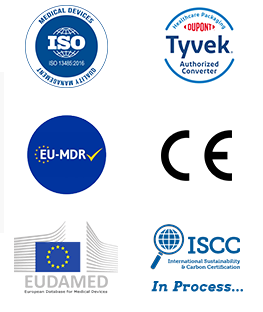Sustainability in the medical packaging industry refers to practices and strategies that aim to reduce the environmental impact of packaging materials and processes while maintaining product safety, sterility, and compliance with regulatory standards. Given the vital role packaging plays in the healthcare sector—protecting medical devices, pharmaceuticals, and supplies—achieving sustainability without compromising these functions is key.
Here’s how sustainability is being approached in the medical packaging industry:
1. Use of Eco-Friendly Materials:
The medical packaging industry is increasingly using materials that are more sustainable, such as:
Biodegradable and compostable plastics: These materials break down naturally, reducing landfill waste.
Recyclable materials: Packaging made from recyclable plastics, glass, or paper helps minimize waste and promotes recycling.
Sustainable polymers: Materials such as Tyvek (like DuPont Tyvek 1421B) can be used in a way that aligns with sustainability goals, particularly when they’re recyclable or made from renewable resources.
2. Reduction of Material Use:
Minimizing the amount of material used in packaging while maintaining protective performance is a sustainable practice. This can involve:
Lightweight packaging: Designing thinner and lighter packaging that still provides protection and preserves sterility.
Right-sizing packaging: Ensuring the packaging fits the product exactly, avoiding excess material and reducing waste.
3. Energy-Efficient Manufacturing:
The medical packaging industry is increasingly adopting energy-efficient technologies in manufacturing processes to lower the carbon footprint. This includes:
Optimized production processes: Reducing energy consumption during production and streamlining operations to minimize resource use.
Using renewable energy sources: Switching to renewable energy like solar or wind power in manufacturing facilities.
4. Sustainable Sterilization Methods:
Sterilization is a critical part of medical packaging, but traditional methods (like using ethylene oxide or radiation) can be resource-intensive. Efforts are underway to:
Adopt alternative sterilization technologies: Methods like steam or ozone sterilization, which are less harmful to the environment.
Minimize use of chemicals: Reducing or eliminating toxic chemicals from the sterilization and packaging processes.
5. Closed-Loop and Circular Economy:
The medical packaging industry is exploring more circular models where materials are recycled and reused, creating a closed-loop system. This might involve:
Reusable packaging: Packaging that can be sanitized and reused multiple times, especially in the case of certain medical devices.
Take-back programs: Some companies are offering programs that collect used packaging materials to be recycled or repurposed.
6. Environmental Certifications and Standards:
Many companies in the medical packaging sector are working towards certifications such as ISCC and aligning with sustainable guidelines. Compliance with global standards helps ensure the packaging is both effective and environmentally responsible.
7. Supply Chain Sustainability:
Sustainable sourcing: Sourcing raw materials from suppliers who practice sustainable harvesting and production methods.
Transport optimization: Reducing the carbon footprint by optimizing transportation methods, such as using more efficient logistics networks, electric delivery vehicles, or reducing the distance goods need to travel.
8. Waste Reduction and Disposal:
Ensuring that packaging waste is properly managed is another important part of sustainability. This involves:
Efficient disposal systems: Using systems that help safely dispose of or recycle medical packaging waste.
Minimizing hazardous waste: Reducing the use of hazardous materials that require special handling or disposal.
9. Regulatory and Ethical Considerations:
While focusing on sustainability, the medical packaging industry must comply with strict regulatory standards, such as MDR (EU) 2017/745 for sterility and safety. Therefore, sustainable
packaging solutions must still meet these stringent requirements without compromising the quality or safety of medical products.
10. Consumer and Market Demand:
There’s growing pressure from consumers, healthcare providers, and regulators for the medical industry to become more environmentally responsible. Companies are responding by:
Transparency: Providing clear information about sustainability practices and material sourcing.
Innovating for the future: Investing in R&D to develop new sustainable materials and processes to meet both environmental and safety standards.
Conclusion:
Sustainability in the medical packaging industry is about finding a balance between reducing environmental impacts and ensuring the continued safety and efficacy of medical products. By focusing on eco-friendly materials, energy efficiency, waste reduction, and closed-loop systems, the industry aims to create packaging solutions that are not only effective but also aligned with global sustainability goals. This helps the industry reduce its environmental footprint while maintaining the highest standards of product protection and sterility.

 English
English Français
Français Deutsch
Deutsch Nederlands
Nederlands

 ‘s-Gravenweg 542, 3065SG RotterdamThe Netherlands
‘s-Gravenweg 542, 3065SG RotterdamThe Netherlands
 +31 (0)10 254 28 08
+31 (0)10 254 28 08







